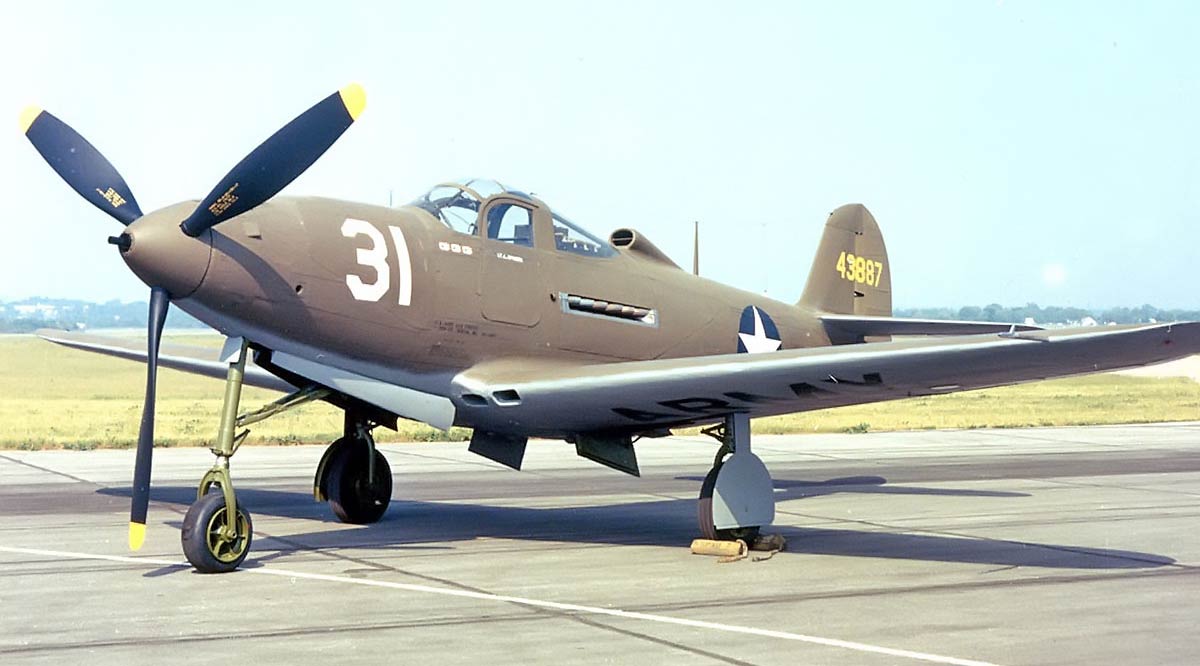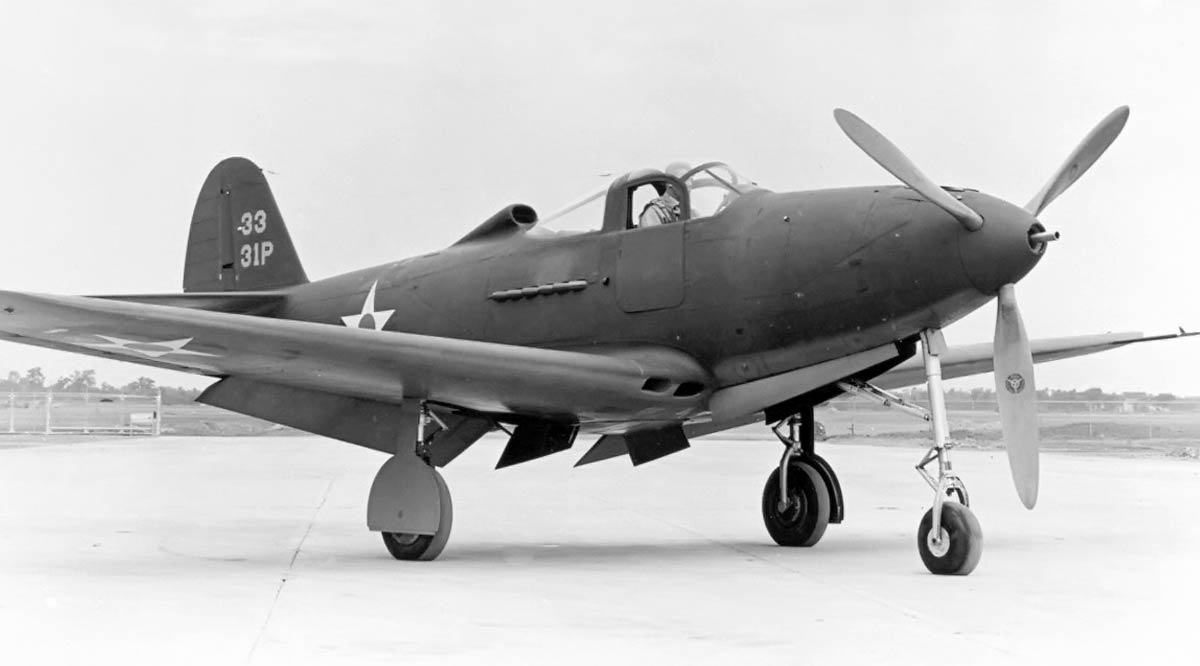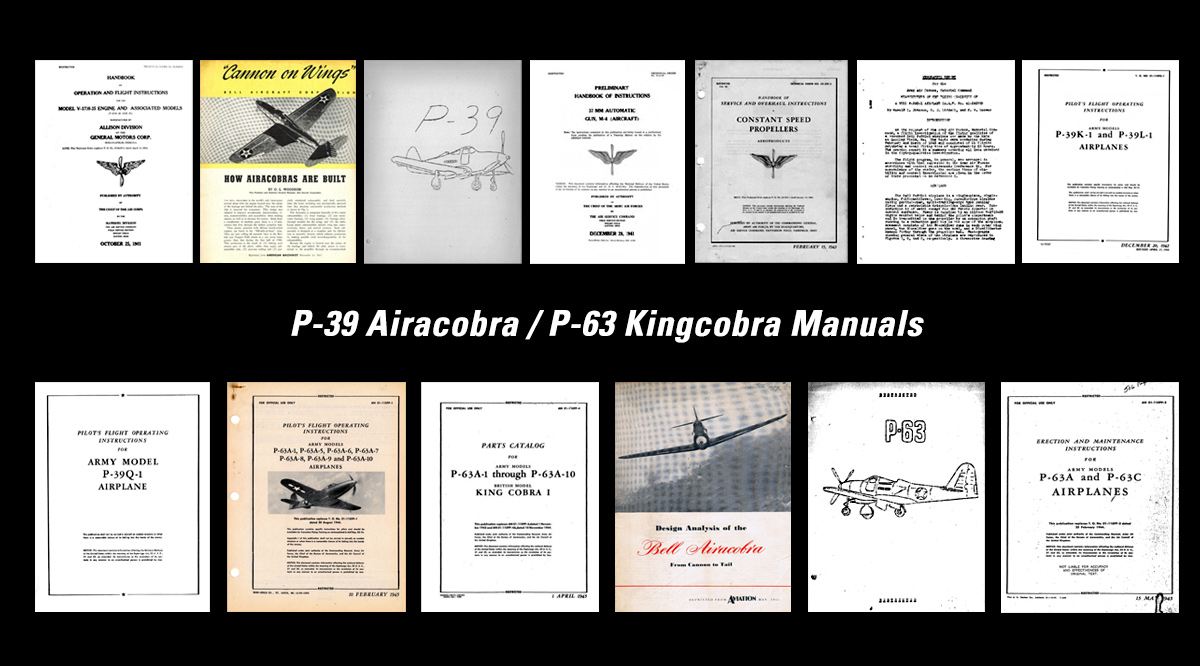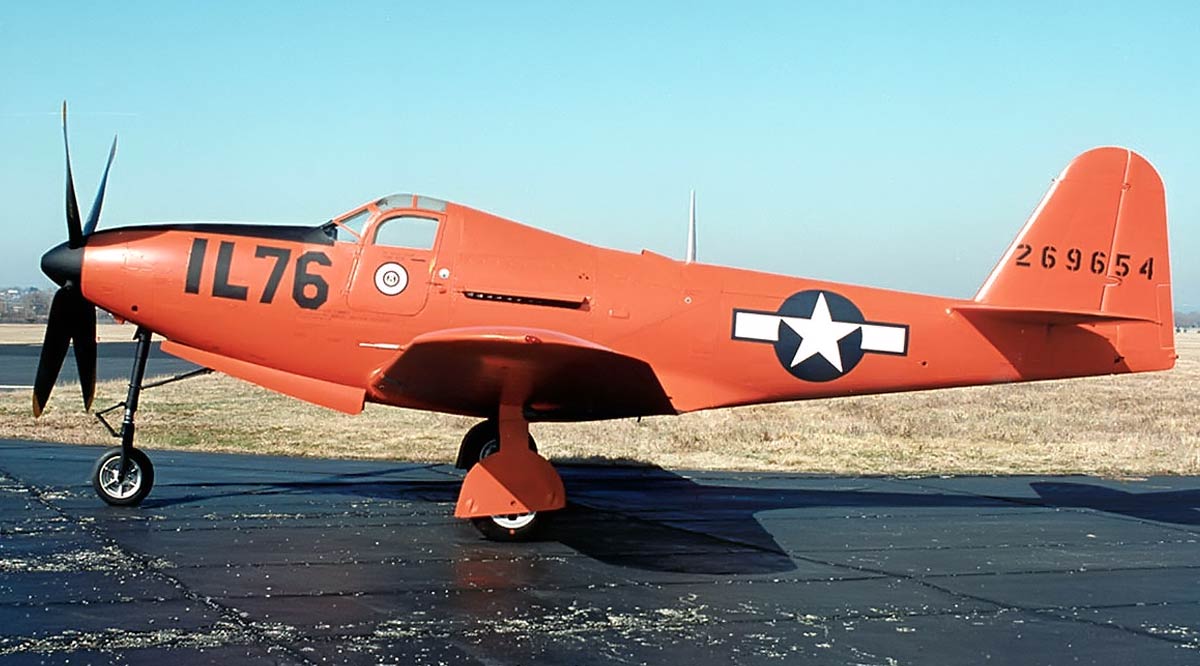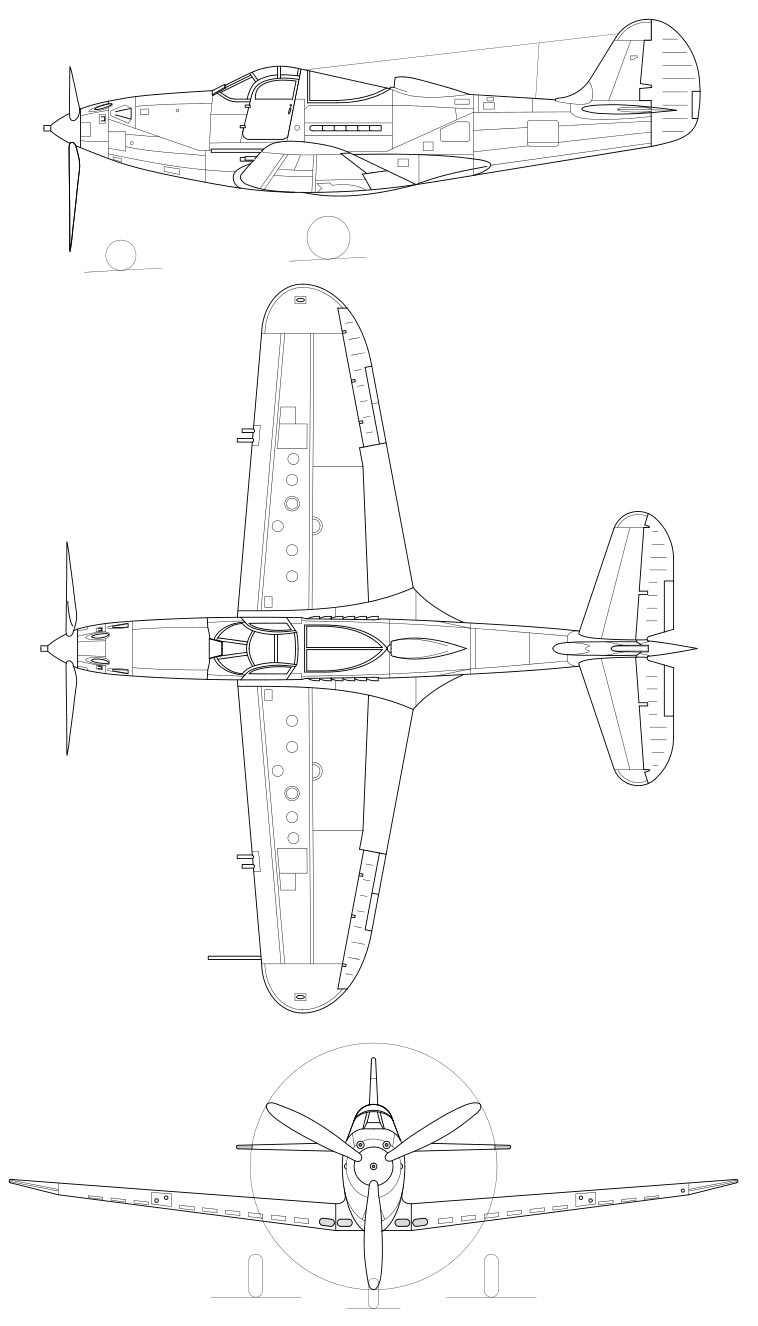Price: $34.95
- 8 magazines, 13 manuals, & photos
- PDF contains 1,975 pages
- Content is keyword searchable
- Print a personal copy
- Pay via PayPal or Credit Card
- International orders welcome!
- Download files upon payment
September 1973
- “Kingcobra”- America’s Great Giveaway Fighter, Solving The Mystery Of Bell’s P-63
November 1978
- Airborne Cobra, The Rise. Fall And Demise Of The Bell P-39 Airacobra (Pt. 1)
January 1979
- Airborne Cobra, Pt. II Of The P-39 Story Revealing Bell’s Fighter In Its Manifold Forms
February 1979
- Airborne Cobra, Painting Up The P-39 In All Its Glory
December 1990
- Outcasts Of The Arsenal, The Worst Aviation Programs Of WWII Airacobra, Buffalo, Eagle & Helldiver
February 1995
- The Saga Of Double Nickel, Buying A Surplus P-63 Kingcobra For $1,000, Racing It & Winning!Any Bonds Today? In Addition To Patching Up P-39 Fighters, Our Distinguished Editor Also Built Floats To Sell War Bonds!
April 1998
- Any Bonds Today? In Addition To Patching Up P-39 Fighters, Our Distinguished Editor Also Built Floats To Sell War Bonds!
October 2000
- Bell’s Premature Airacobra, Why It Could Have Been Much Better Than It Was!
Manuals & Photos
- P-39 Engine Manual
- P-39 Flight Manual
- P-39 Gun Handbook
- P-39 How Airacobras Are Built
- P-39 Propeller Manual
- P-39D Memorandum
- P-39K Pilot’s Manual
- P-39Q Pilot’s Manual
- P-63 Design Analysis
- P-63 Flight Manual
- P-63A Flight Instructions
- P-63A Parts Catalog
- P-63A-C Maintenance
- Over 280 P-39 & P-63 photos!
Bell P-39 Airacobra
P-39Q Specifications
P-39 Variants
P-39s On Display
P-39D Cutaway
General Characteristics
- Crew: One
- Length: 30 ft 2 in (9.2 m)
- Wingspan: 34 ft 0 in (10.4 m)
- Height: 12 ft 5 in (3.8 m)
- Wing area: 213 sq?ft (19.8 m²)
- Empty weight: 5,347 lb (2,425 kg)
- Loaded weight: 7,379 lb (3,347 kg)
- Max. takeoff weight: 8,400 lb (3,800 kg)
- Powerplant: 1 × Allison V-1710-85 liquid-cooled V-12, 1,200 hp (895 kW)
Performance
- Maximum speed: 376 mph (605 km/h) (Redline dive speed was 525 mph)
- Range: 525 miles on internal fuel (840 km)
- Service ceiling: 35,000 ft (10,700 m)
- Rate of climb: 3,750 ft/min (19 m/s)
- Wing loading: 34.6 lb/sq?ft (169 kg/m²)
- Power/mass: 0.16 hp/lb (0.27 kW/kg)
- Time to climb: 15,000 in 4.5 min at 160 mph (260 km/h).
Armament
- Guns:
- 1 x 37 mm M4 cannon in nose (firing through the propeller hub). 30 rounds of HE-T ammunition gun.
- 2 x .50 cal (12.7 mm) synchronized Browning M2 machine guns, nose-mounted. 200 rounds per gun
- 2 x .50 cal (12.7 mm) Browning M2 machine guns, wing mounted. 300 rounds per gun
- Bombs: Up to 500 lb (230 kg) of bombs under wings and belly
XP-39
- XP-39-BE
- Bell Model 11, one prototype 38–326 first flown 6 April 1938. Powered by an Allison V-1710-17 (E2) engine (1,150 hp/858 kW), the aircraft was fitted with a General Electric B-5 turbosupercharger, creating a two stage supercharging system similar to the P-38. Provision was made for two .50 in (12.7 mm) machine guns in the forward fuselage and one 25 mm (.98 in) cannon but aircraft remained unarmed. Later converted to XP-39B.
YP-39
- YP-39
- Bell Model 12, service test version, V-1710-37 (E5) engine (1,090 hp/813 kW). First two aircraft delivered with armament, the remained with a M4 37 mm (1.46 in) autocannon with 15 rounds, 2 × .50 in (12.7 mm) machine guns with 200 rpg, and 2 × .30 in (7.62 in) machine guns with 500 rpg in the nose. wider vertical tail than XP-39B. 12 completed with the first flying 13 September 1940.
- YP-39A
- One intended to have a high-altitude V-1710-31 engine (1,150 hp/858 kW), but was delivered as a regular YP-39.
XP-39B
- XP-39B
- One conversion first flown 25 November 1939. Streamlined XP-39 based on NACAwind tunnel testing resulting in revised canopy and wheel door shape, oil and radiator intakes moved from right fuselage to wing roots, fuselage increased length (by 1 ft 1 in, to 29 ft 9 in) and decreased wingspan (by 1 ft 10 in, to 34 ft). The turbosupercharger was removed, and the single-stage, single speed, supercharged Allison V-1710-37 (E5) engine (1,090 hp/813 kW) was left in place. The carburetor air intake was moved behind canopy, just above the carburetor.
P-39C
- P-39C
- Bell Model 13, first flown in January 1941 it was the first production version, identical to YP-39 except for V-1710-35 engine (1,150 hp/858 kW). Armed with 1 × 37 mm (1.46 in) cannon, 2 × .50 in (12.7 mm) & 2 × .30 in (7.62 mm) machine guns in the nose. Aircraft lacked armor and self-sealing fuel tanks. Twenty produced out of an order of 80 the remainder were redesignated P-39D
Airacobra I
- Airacobra I
- Bell Model 13, Royal Air Force designation for three P-39Cs sent to United Kingdom England for testing.
- Airacobra IA
- Bell Model 14. Briefly named Caribou. V-1710-E4 (1,150 hp/858 kW) engine, 1 × 20 mm (.79 in) cannon with 60 rounds & 2 × 0.50 in (12.7 mm) machine guns were mounted nose and four 0.303 in (7.7 mm) machine guns were mounted in the wings. IFF set removed from behind pilot. note: the designation IA indicates direct purchase aircraft; 675 built. The USAAF operated 128 former RAF aircraft with the designation P-400.
P-39D
- P-39D-BE
- Bell Model 13, production variant based on the P-39C with 245 lb (111 kg) of additional armor, self-sealing fuel tanks. Armament increased to 1 × 37 mm/1.46 in cannon (30 rounds), 2 × .50 in/12.7 mm (200 rpg) and 4 × wing mounted .30 in/7.62 mm (1,000 rpg) machine guns; 60 Produced.
- P-39D-1
- Bell Model 14A, production variant fitted with a 20 mm (.79 in) M1 cannon. Specifically ordered for delivery under Lend-Lease; 336 produced
- P-39D-2
- Bell Model 14A-1, production variant with a V-1710-63 (E6) engine (1,325 hp/988 kW) restored the 37 mm (1.46 in) cannon, provisions for a single 145 gal (549 l) drop tank or maximum 500 lb (227 kg) bomb under the fuselage; 158 produced.
- P-39D-3
- 26 conversions from P-39D-1 to Photo Reconnaissance Configuration; K-24 and K-25 camera in rear fuselage, extra armor for oil coolers
- P-39D-4
- 11 conversions from P-39D-2 to Photo Reconnaissance Configuration. Same modifications as D-3 aircraft.
XP-39E
- XP-39E
- Bell Model 23. three P-39Ds modified for ground and flight testing first flown 21 February 1942. Intended for Continental I-1430-1 engine with (2,100 hp/1,566 kW) actually flown with Allison V-1710-47 (1,325 hp/988 kW) engine. Airframes were used to test various wing and different vertical tail surfaces. Fuselage was lengthened by 1 ft 9 in (53 cm). Used in the development of the P-63. The production variants, with the Continental engines were to be redesignated as P-76; there was no Bell XP-76 as such.
P-39F
- P-39F-1
- Bell Model 15B, production variant with three-bladed Aeroproducts constant speed propeller, 12 exhaust stacks; 229 built.
- TP-39F-1
- One P-39F converted as a two-seat training version with additional cockpit added in nose— no armament.
- P-39F-2
- 27 conversions from P-39F-1 with additional belly armor and cameras in rear fuselage.
P-39G
- P-39G
- Bell Model 26, 1800 order and intended to be a P-39D-2 with an Aeroproducts propeller. Due to modifications during production no P-39G were actually delivered. Instead, these aircraft were designated P-39K, L, M and N.
P-39H
- Designation not used
P-39J
- P-39J
- Bell Model 15B, a P-39F with V-1710-59 (1,100 hp/820 kW) engine with automatic boost control,; 25 built.
P-39K
- P-39K-1
- Bell Model 26A, a P-39D-2 with Aeroproducts propeller and V-1710-63 (E6) (1,325 hp/988 kW) engine. Vents added to nose; 210 built.
- P-39K-2
- Six conversion from P-39K-1 with additional belly armor and cameras in rear fuselage.
- P-39K-5
- One conversion with a V-1710-85 (E19) engine to serve as a P-39N prototype
P-39L
- P-39L-1
- Bell Model 26C, a P-39K with Curtiss Electric propeller, revised nose gear for reduced drag, provision for underwing rockets; 250 built.
- P-39L-2
- Eleven conversions from P-39L-1 with additional belly armor and cameras in rear fuselage.
P-39M
- P-39M-1
- Bell Model 26D, variant with an 11 ft 1 in Aeroproducts propeller, V-1710-67 (E8) (1,200 hp/895 kW) engine with improved high-altitude performance at the expense of low-altitude performance, 10 mph (16 km/h) faster than P-39L at 15,000 ft (4,600 m). Note: some P-39M-1BE were delivered with the V-1710-83 (E18) engine; 240 built.
P-39N
- P-39N
- Bell Model 26N, originally part of the P-39G order. V-1710-85 (E19) (1,200 hp/895 kW) engine. Aeroproducts propeller (10 ft 4 in diameter) & different propeller reduction gear ratio. Starting with the 167th aircraft, propeller increased to 11 ft 7 in & internal fuel reduced from 120 gal (454 l) to 87 gal (329 l); 500 built.
- P-39N-1
- Variant with internal changes to adjust center of gravity when nose guns were fired; 900 built.
- P-39N-2
- 128 P-39N-1 converted with additional belly armor and cameras in rear fuselage.
- P-39N-3B
- 35 P-39N converted with additional belly armor and cameras in rear fuselage.
- P-39N-5
- Variant with armor reduced from 231 lb (105 kg) to 193 lb (88 kg), Armor plate replaced the bulletproof glass behind the pilot, SCR-695 radio was fitted, and a new oxygen system was installed; 695 built.
- P-39N-6
- 84 P-39N-5 converted with additional belly armor and cameras in rear fuselage.
P-39P
- Not used
P-39Q
- The final production variant last one built in August 1944. Remaining examples redesignated as ZF-39Q in June 1948.
- P-39Q-1
- Bell Model 26Q, variant with wing-mounted 0.30 in (7.62 mm) machine guns replaced with a single 0.50 in (12.7 mm) with 300 rounds of ammunition in a pod under each wing. Armor increased to the original 231 lb (105 kg) of armor of the P-39N-1BE; 150 built.
- P-39Q-2
- Five P-39Q-1s modified to carry cameras for photographic reconnaissance by adding K-24 and K-25 cameras in the aft fuselage.
- P-39Q-5
- Production variant with reduced armor (193 lb/88 kg), fuel capacity increased (110 gal/l). Type A-1 bombsight adapters added; 950 built.
- TP-39Q-5
- One conversions to a two-seat training variant with additional cockpit added in nose – no armament. Enlarged tail fillet and a shallow ventral fin added.
- P-39Q-6
- 148 P-39Q-5s modified to carry cameras for photographic reconnaissance by adding K-24 and K-25 cameras in the aft fuselage.
- P-39Q-10
- Variant with increased armor (228 lb/103 kg), fuel capacity increased (120 gal/454 l). Automatic Boost controls added and Throttle & RPM controls were coordinated. Winterization of oil systems and rubber mounts added to the engines; 705 built.
- P-39Q-11
- Eight P-39Q-10s modified to carry cameras for photographic reconnaissance by adding K-24 and K-25 cameras in the aft fuselage.
- P-39Q-15
- Production variant with reinforced inclined deck to prevent .50 in (12.7 mm) machine gun tripod mounting cracking, bulkhead reinforcements to prevent rudder pedal wall cracking, a reinforced reduction gearbox bulkhead to prevent cowling former cracking, and repositioning of the battery solenoid. Oxygen system reduced from four bottle to only two; 1,000 built.
- P-39Q-20
- Production variant with minor equipment changes. The underwing 0.50 in (12.7 mm) machine gun pods were sometimes omitted in this version; 1,000 built.
- P-39Q-21
- 109 P-39Q-20 fitted with a four-bladed Aeroproducts propeller.
- RP-39Q-22
- 12 P-39Q-20s converted to two-seat trainers .
- P-39Q-25
- Production variant similar to the P-39Q-21 but with a reinforced aft-fuselage and horizontal stabilizer structure; 700 built.
- P-39Q-30
- Production variant that reverted to the three-bladed propellor; 400 built.
- XTDL-1
- United States Navy designation for two P-39Qs used as target drones. Assigned to NAS Cape May for test work. Later redesignated F2L-1K.
Other
- P-45
- The P-45 was the initial designation of the P-39C or Model 13.
- XFL-1 Airabonita
- One prototype for the United States Navy.
Australia
-
On display
-
- P-39D
- 41-6951 – Beck Military Collection in Mareeba, Queensland.
-
Under restoration
-
- P-39F
- 41-7215 – Precision Aerospace Productions in Glenrowan, Victoria.
-
- P-39K
- 42-4312 – Classic Jet Fighter Museum in South Australia.
Finland
- P-39Q
- 44-2664 – Aviation Museum of Central Finland in Tikkakoski.
Papua New Guinea
- P-39N
- 42-19039 – J. K. McCarthy Museum in Goroka, Papua New Guinea.
United States
-
Airworthy
-
- P-39N
- 42-8740 (unnamed) – Yanks Air Museum in Chino, California.
-
- P-39Q
- 42-19597 Miss Connie – Commemorative Air Force (CenTex Wing) in San Marcos, Texas.
- 42-19993 Brooklyn Bum – Lewis Air Legends in San Antonio, Texas.
-
On display
-
- P-39N
- 42-18814 Girlie – Pima Air & Space Museum, adjacent to Davis-Monthan AFB in Tucson, Arizona.
- 42-18408 Snooks 2nd / Betty Lou 3rd – Buffalo and Erie County Naval & Military Park in Buffalo, New York.
- 42-19027 Small Fry/Little Sir Echo – Planes of Fame in Chino, California.
-
- P-39Q
- 42-20000 (unnamed) – March Field Air Museum at March ARB (former March AFB) in Riverside, California.
- 42-20007 (unnamed) – Virginia Air & Space Center near Langley AFB in Hampton, Virginia.
- 44-2485 (unnamed) – Erickson Aircraft Collection in Madras, Oregon
-
- RP-39Q
- 44-3887 (unnamed) – National Museum of the United States Air Force at Wright-Patterson AFB in Dayton, Ohio.
- 44-3908 Whistlin Britches – Air Zoo in Kalamazoo, Michigan.
-
Under restoration or in storage
-
- P-39Q
- 44-2433 Galloping Gertie – in storage at the Paul Garber Facility of the National Air and Space Museum in Silver Hill, Maryland.
- 44-2911 Miss Lend Lease – under restoration at the Niagara Aerospace Museum in Niagara Falls, New York.
Bell P-63 Kingcobra
P-63A Specifications
P-63 Variants
P-39 On Display
General Characteristics
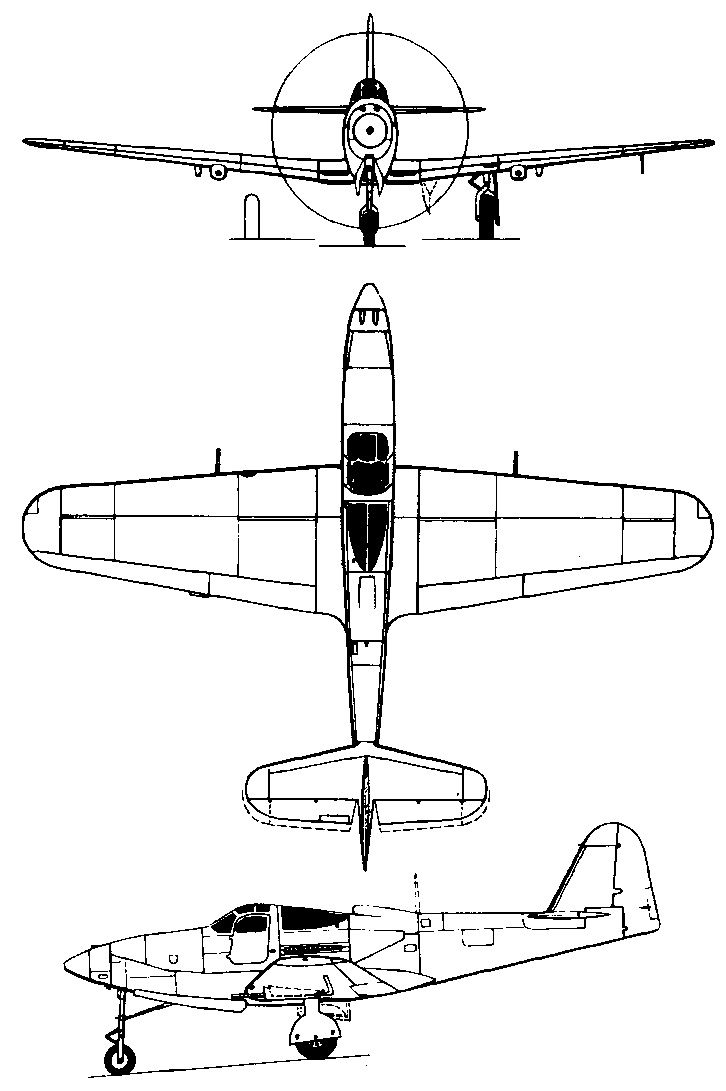
- Crew: 1
- Length: 32 ft 8 in (10.0 m)
- Wingspan: 38 ft 4 in (11.7 m)
- Height: 12 ft 7 in (3.8 m)
- Wing area: 248 sq?ft (23 m²)
- Empty weight: 6,800 lb (3,100 kg)
- Loaded weight: 8,800 lb (4,000 kg)
- Max. takeoff weight: 10,700 lb (4,900 kg)
- Powerplant: 1 × Allison V-1710-117 liquid-cooled V-12, 1,800 hp (1,340 kW)
Performance
- Maximum speed: 410 mph (660 km/h) at 25,000 ft (7,620 m)
- Range: 450 mi (725 km)
- Ferry range: 2,200 mi (3,540 km)
- Service ceiling: 43,000 ft (13,100 m)
- Rate of climb: 2,500 ft/min (12.7 m/s)
- Wing loading: 35.48 lb/sq ft (173.91 kg/m²)
- Power/mass: 0.20 hp/lb (0.34 kW/kg)
Armament
- Guns:
- 1× 37 mm M4 cannon firing through the propeller hub. From the A-9 version of the aircraft onward, the M4 gun was replaced with the slightly improved M10 37 mm cannon, which used a disintegrating link ammunition belt, increasing the ammo capacity to 58 rounds; the M10 also had a slightly higher rate of fire.
- 4× 0.50 in (12.7mm) M2 Browning machine guns (two synchronized in the nose, two in the wings)
- Bombs: 1,500 lb (680 kg) bomb load on wing and fuselage
- XP-63 Prototypes (two) (company designation was Model 24); USAAF serials (41-19511 and 41-19512).
- XP-63A Following the loss of the first two prototypes, an additional test aircraft was procured, USAAF serial 42-78015, originally ordered as a testbed for the proposed Rolls-Royce Merlin-poweredP-63B.
- P-63A The production model Bell Model 33; 1725 P-63As produced in various sub-marks.
- P-63B Proposed Rolls-Royce Merlin-poweredP-63B series was cancelled due to lack of availability of Merlin engines.
- P-63C Second production series differed from the P-63A by being powered by the uprated Allison V-1710-117 engine with a war emergency rating of 1,500 hp (1,120 kW) at sea level and 1,800 hp (1,340 kW) with water injection. The wingspan was reduced by 10 inches (250 mm). A total production run of 1,227 was completed.
- P-63D One aircraft (43-11718) powered by an Allison V-1710-109 (E22) 1,425 hp (1,063 kW) featured a 10 in (25 cm) wingspan increase (to 39 ft 2 in (11.94 m), gross area being increased to 255 sq ft (23.7 m2) and, most noticeably, a rearward-sliding bubble canopy. The series was cancelled in 1945.
- P-63E Essentially similar to the P-63D with the exception of a ventral fin extension and the use of a standard “cab”-style cockpit; only 13 built.
- P-63F Bell Model 43 variant featured an enlarged vertical tail and Allison V-1710-135; only two (43-11719 and 43-11722) built.
- RP-63A/C “Pinball” Target aircraft with five modified from P-63As and 95 modified on production lines; in 1948, surviving RP-63A aircraft were redesignated QF-63A. A further 200 production RP-63C aircraft were modified on the production line. Similarly, the surviving RP-63Cs were redesignated QF-63Cs. Many of the “target” aircraft were actually used as target tugs.
- RP-63G “Pinball” “Dedicated” flying targets which included two prototypes (43-11723and 11724) and 30 production aircraft that incorporated a flush dorsal inlet but, more significantly, lights that would come on when the target was struck with frangible munitions. In 1948, the remaining RP-63Gs were redesignated QF-63Gs.
- L-39 Two war surplus P-63Cs modified by Bell under Navy contract for flight testing of low-speed and stall characteristics of high-speed wing designs.
Honduras
-
On display
-
- P-63E
- 43-11730 – Museo Del Aire, Toncontin International Airport, Tegucigalpa.
Russia
- On display
-
- P-63A
- 42-68875 – Russian Air Force Museum, Moscow.
-
- P-63C
- 44-4011 – Museum of the Great Patriotic War in Moscow.
United Kingdom
-
Under Restoration
-
- P-63C
- 43-11137 – under restoration at the Wings Museum, Balcombe, West Sussex. The museum also has 5 other P-63 Airframes.
United States
-
Airworthy
-
- P-63A
- 42-68864 Pretty Polly – Palm Springs Air Museum in Palm Springs, California.
- 42-69080 Fatal Fang – Yanks Air Museum in Chino, California.
-
- P-63C
- 43-11223 – Legacy of Flight Museum in Rexburg, Idaho.
-
- P-63F
- 43-11719 – Commemorative Air Force (P-63 Sponsor Group) in San Marcos, Texas.
-
On display
-
- P-63A
- 42-70609 – Military Aviation Museum in Virginia Beach, Virginia.
-
- P-63E
- 43-11727 – Pima Air & Space Museum in Tucson, Arizona. It is on loan from the National Museum of the United States Air Force at Wright-Patterson AFB in Dayton, Ohio.
- 43-11728 – National Museum of the United States Air Force at Wright-Patterson AFB in Dayton, Ohio.
-
- RP-63G
- 45-57295 – Lackland AFB, Texas.
-
Under Restoration or in storage
-
- P-63A
- 42-68941 – to airworthiness by Commemorative Air Force (Dixie Wing) in Peachtree City, Georgia.
- 42-70255 Edyth Louise – in storage at the Paul Garber Facility of the National Air and Space Museum in Silver Hill, Maryland.
-
- RP-63C
- 43-11117 – in storage at Fantasy of Flight in Polk City, Florida.



